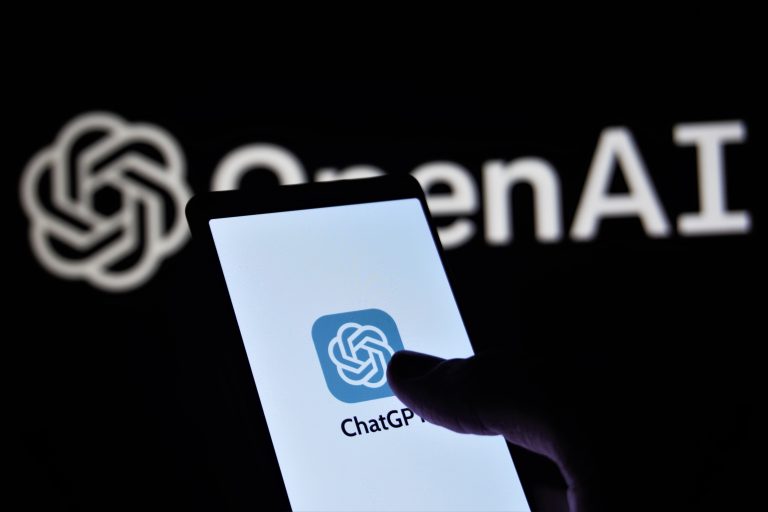Read the first article in our series to learn more about the key findings.
In our last article of the AI blog series, we discussed key findings from The “Trust in Artificial Intelligence” joint report by KPMG and the University of Queensland Australia and the “Achieving Individual – and Organizational – Value with AI“ report, a study compiled by MIT Sloan and BCG. Now, we are taking a deeper dive into these findings while connecting them to what we do best – determine and create space for the future of work and the workplace.
We know that it is still early days for AI in terms of its greater widespread ubiquitous use. Nevertheless, what we will outline could appear in the future in some version or form.
Unlocking Individual Productivity
What got people initially excited by ChatGPT was how users could interface with the application in a conversational manner. The traditional search engine function, like those used in Google, Bing, Ask Jeeves, and Yahoo Search, has been how we query information for decades.
The user experience and functions of generative AI, like what is used in ChatGPT, could influence the next generation of user interface for applications like Westlaw, Bloomberg, Gartner, and PwC. These applications have a high degree of trust established by their users.
Since trust is well established in these applications, they could incorporate the generative AI functionality and the user experience. The most significant change would be instructing professionals using these applications on the difference in querying between the standard search engine model and generative AI. Where the standard search engine model uses phrases or keywords, generative AI can be instructed to articulate its answers through prompts establishing context for the AI. An example of a prompt can be setting a “persona” for the AI to make better-informed responses. Professionals using these applications would need to set criteria or inform the AI of the persona to adopt before conducting the research.
Professionals need to adopt the practices outlined above in the insights – such as managers endorsing and modeling trust, understanding, agency, and awareness. The professional’s setting criteria or persona exemplifies the 75/25 or 50/50 split of people to AI partnership. The dialogue and engagement with AI further reinforce this partnership as well. As a result, we can see companies benefiting from greater and deeper insights, more trust in the rationale that supports action, and professionals deriving greater individual value from AI.
Enhancing Distance Collaboration
In addition to technologies like generative AI, there are ways that general AI can be used to enhance the future of work and the workplace. General AI technologies can be applied to a specific problem or task. Nearly every technology people use has some form of general AI – from phones, computers, televisions, cars, and VR headsets, to software applications. The list is endless. Specific technologies that use sensors as part of their systems are synonymous with general AI.
Sensor use indicates a faster adoption and economy of scale for inclusion in all sorts of devices ready for an upgrade in the workplace. Devices like laptops, PDAs (phones and tablets), VTC cameras, and heat and occupancy devices are a few examples. You can think of it as, “For every camera you have, you can also have sensors.” Car companies have been placing sensors all around the car’s body for years now – mostly to anticipate the proximity of other vehicles to your own. The economy of scale and commoditization of sensors is fast approaching, and consumers will reap the benefits.
The newest HR headsets are outfitted with cameras and sensor technology on the exterior and interior of the headset. Previous headsets by Meta and other manufacturers only had cameras solely for tracking your hands IRL. The sensors can pick minor adjustments in facial expressions to lessen the “uncanny valley” and “cold dead eye” effect that metaverse avatars have right now—all good things to lessen the cringe.
In a new demo for the power of sensors in headsets, a person can use their phone to take a quick scan of their face, going left to right and up to down, and the codec would create a new, more realistic avatar – a major criticism that Meta has been facing among many others. The result is a much deeper and richer experience for using headsets.
It occurs to us that you can scan your face for a realistic avatar – a feature that Apple is showcasing in their Vision Pro headset. The sensors can express the subtleties of your eye and facial movement; you can outfit a conference room with a camera and sensor tech to scan the room and create “a more real environment” that distant and remote colleagues can feel more included in.
In Conclusion
Imagine starting a meeting, and the VTC system scans the room environment and replicates the area in the headset of the remote colleague. For example, the conference rooms in the office could have screens and cameras on all four sides – so that the people in the room could be looking at the remote colleague. Star Wars fans can think of it as having their own Jedi Council meeting. This is one of the many applications that can be realized with AI.
The future of AI and its integration into the workplace are quite variable. New updates to this technology are being processed daily, and we are seeing AI break into many parts of the business – from marketing and design to sales and business development, leadership, management and more. Many effects are positive, and if employees can learn how to successfully integrate AI technology into their daily lives, overall productivity will increase, and the connection between those in the office and working from a remote location will be stronger.
Stay on Top of the AI Trends
Consult with one of our strategy and consulting experts today to provide organizational training on preparing your office and employees for this new world full of AI technology.

